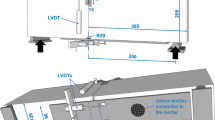Abstract
Corrosion of reinforcement bars due to chloride ingress is a well known problem in reinforced concrete. Several methods have been adopted to protect reinforced concretc, and one of them is to provide added protection to the concrete surface in the form of surface treatments such as silanes and siloxanes. They react with the cement matrix and form a hydrophobic layer on the walls of the pores within the concrete. This protects the concrete from the ingress of water and water-born salts.
Moisture is required for reaction of silanes and siloxanes with the hydrated cement matrix. However, too much water in the pores of concrete will prevent the treatments from penetrating deeper into the pores. A study has been carried out to investigate the variation, due to the presence of moisture, on the effectiveness of the protection. It has been found that irrespective of the moisture content at the time of application of treatment, silanes and siloxanes provided good protection against chloride ingress and corrosion of reinforcement bars. However, the depth of penetration and therefore the durability of the treatment is adversely affected when the concrete is near saturation.
Résumé
Dans le béton armé, la corrosion des armatures de renforcement due à la pénétration du chlorure est un problème bien connu. Plusieurs méthodes ont été adoptées pour protéger le béton armé, dont la protection supplémentaire au revêtement du béton sous forme de traitement à la surface par des silanes et des siloxanes. Ces produits réagissent avec la matrice cimentaire et forment une couche hydrophobe sur les parois des pores à l'intérieur du béton, empêchant la pénétration de l'eau et des sels véhiculés par l'eau.
L'humidité est nécessaire pour obtenir la réaction des silanes et des siloxanes avec la matrice cimentaire hydratée. Cependant, trop d'eau dans les pores du béton empêche les traitements de pénétrer plus profondément dans les pores. Une étude a été menée sur l'efficacité de la protection en fonction des variations de la présence de l'humidité. On a constaté que, quelle que soit la teneur en humidité au moment de l'application du traitement, les silanes et les siloxanes fournissent une bonne protection contre l'entrée du chlorure et la corrosion des armatures. Néanmoins, la profondeur de la pénétration, et donc la résistance du traitement, sont défavorablement modifiées lorsque le béton est près de la saturation.
Similar content being viewed by others
References
Pfeifer, D. W., Scali, M. J., ‘Concrete Sealers for Protection of Bridge Structures’, Department of Transportation, NCHRP 244, Washington D. C. (December 1981) 138 p.
Roth, M., ‘Siliconates-Silicone resins-Silanes-Siloxanes-Silicone masonry water repellents for the surface impregnation of mineral building materials’, Concrete and Masonry Protection, Castle Hotel, Windsor (July 1986) 11 p.
Smith, M.D., ‘Silane Chemical Protection of Bridge Decks’, R & D Division, Oklahoma Department of Transportation, FHRWA/OK 86(4), 42 p.
Robinson, H.L., ‘An Evaluation of Silane Treated Concrete’, Technical note No: 1634, Taywood Engineering Ltd. (Nov. 1986) 30 p.
Concrete Society, ‘Permeability Testing of Site Concrete—A Review of Methods and Experience’, The Concrete Society, Report No. 31 (1987) 95 p.
Page, C. L., Lambert, P.et al., ‘Investigation of reinforcement corrosion. The pore electrolyte phase in chloride contaminated concrete’,Mater. Struct. 24 (1991) 243–252.
Pfeifer, D. W., Landgren, J. R.et al., ‘Protective Systems for New Prestressed and Substructure Concrete—Pilot Time to Corrosion Studies’, Department of Transportation, Washington, Federal Highway Administration Washington (December 1984) 126 p.
Basheer, L., ‘Assessment of the Durability Characteristics of Surface Treated Concrete’, PhD thesis, The Queen's University of Belfast (1994) 296 p.
BSI, ‘Methods for Analysis of Hardened Concrete’, British Standards Institution, BS 1881: Part 124 (1988) 21 p.
Author information
Authors and Affiliations
Additional information
Editorial note Prof. David J. Cleland is a RILEM Senior Member and the Secretary of TC 145-WSM (Workability of Special Concrete Mixes). Prof. A. E. Long is a RILEM Senior Member and a member of TCs 126-IPT (In-place Testing of Hardened Concrete) and 163-TPZ (Interfacial Transition Zone and Properties of Transfer).
Rights and permissions
About this article
Cite this article
Basheer, L., Cleland, D.J. & Long, A.E. Protection provided by surface treatments against chloride induced corrosion. Mat. Struct. 31, 459–464 (1998). https://doi.org/10.1007/BF02480469
Received:
Accepted:
Issue Date:
DOI: https://doi.org/10.1007/BF02480469




